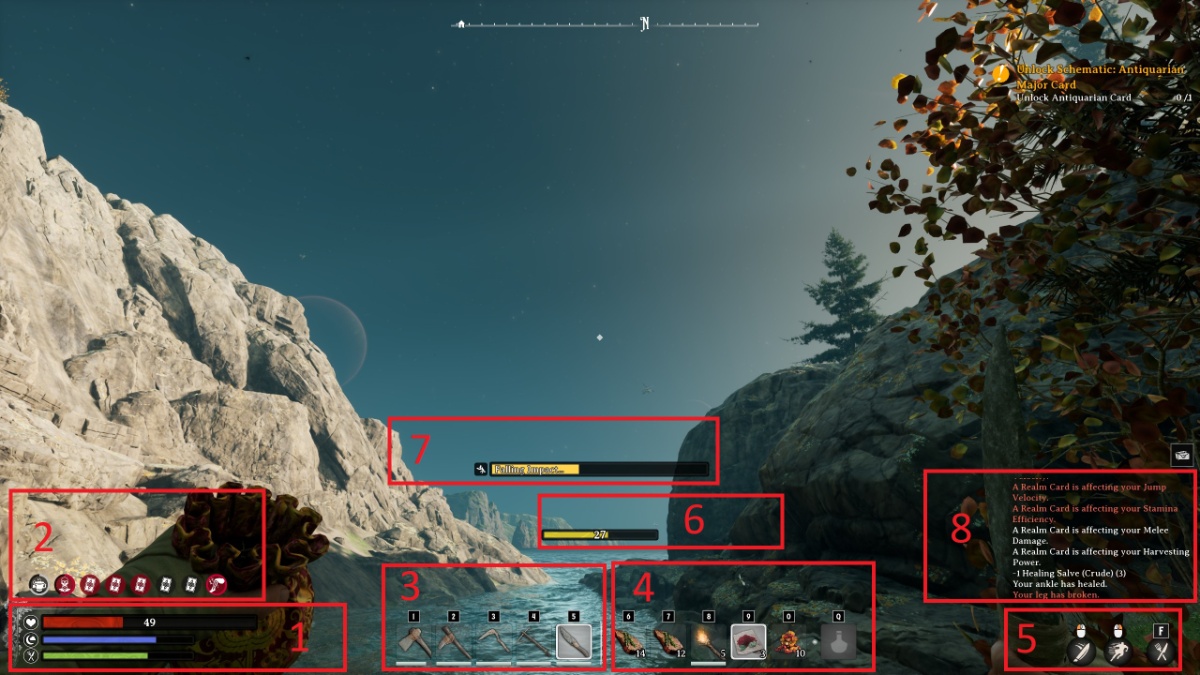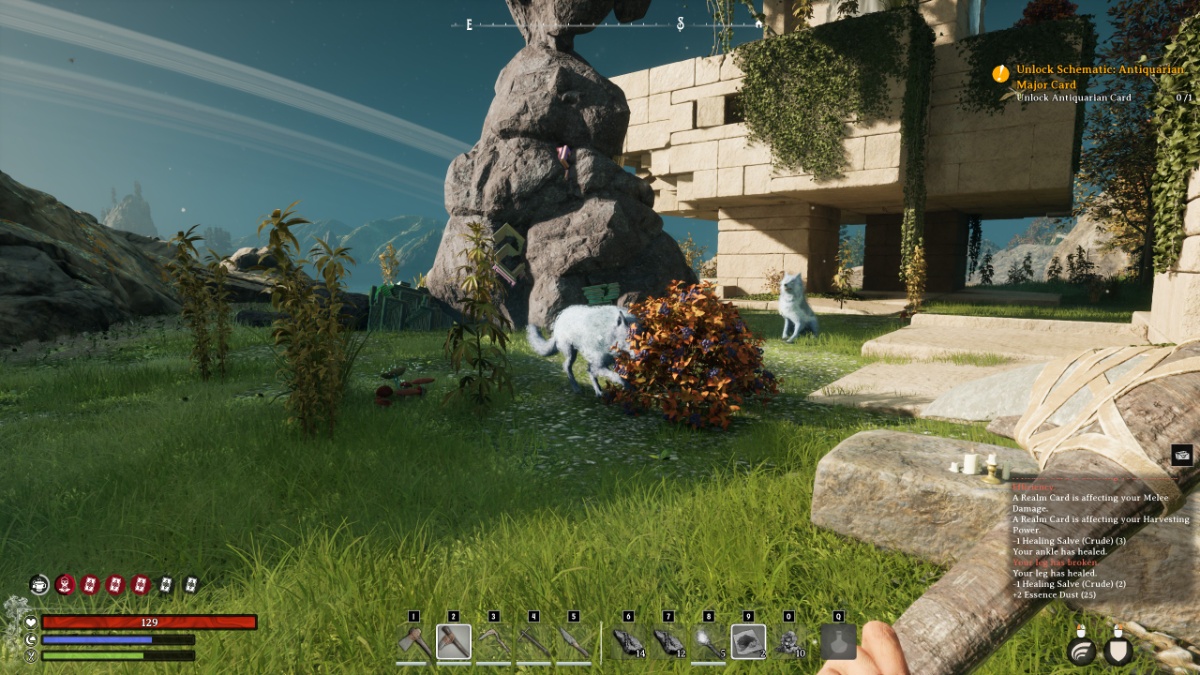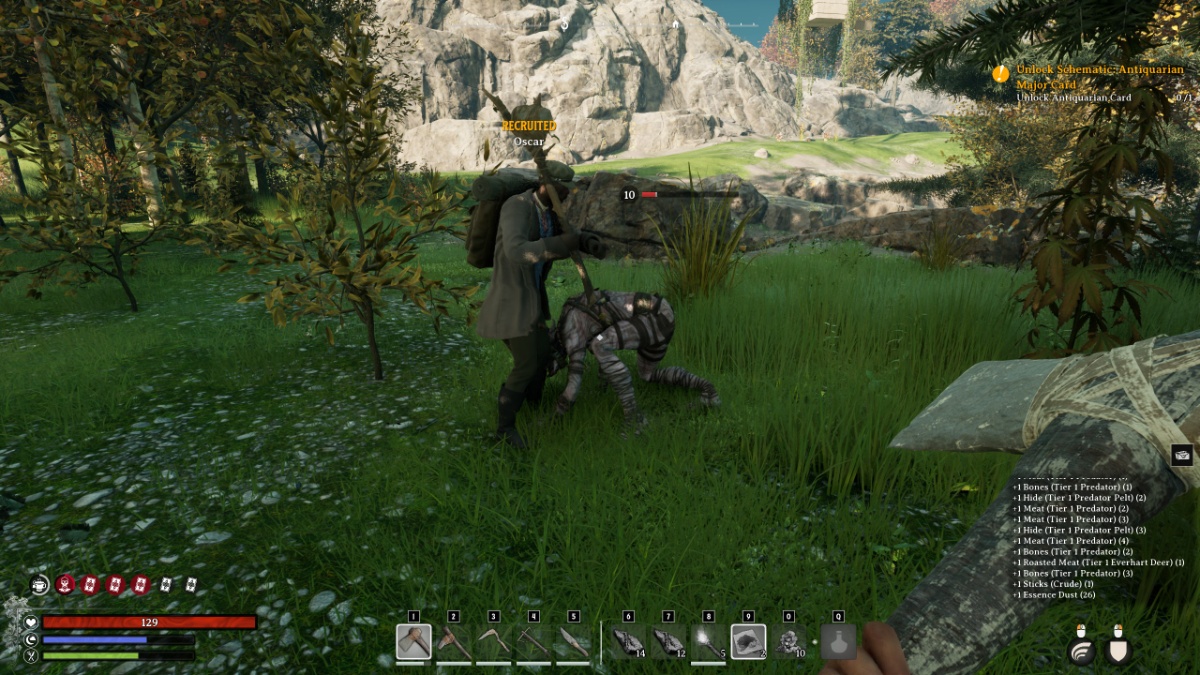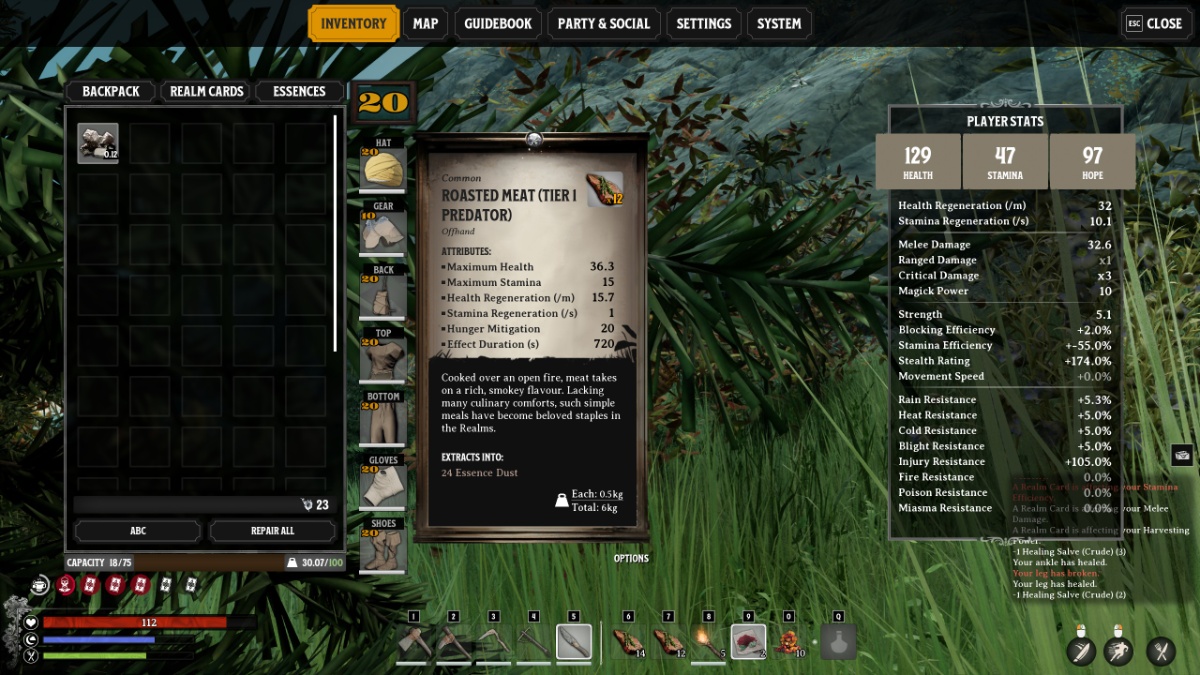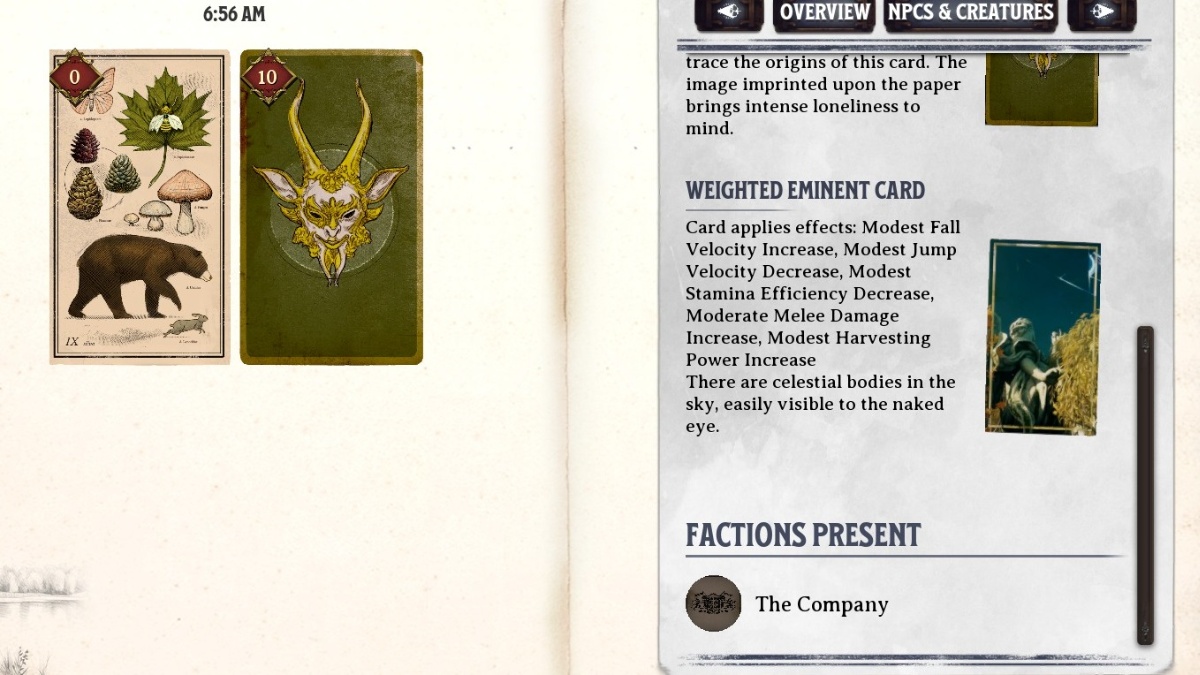Skip To...
When heading out in the realms of Nightingale, you mustn’t forget your trusty umbrella, top hat, trench coat, and, of course, your guns. It’s dangerous in the fae wilds out there, and you’ll have to stain your posh Victorian attire with blood (someone else’s, hopefully) if you want your fancy abode. Not to worry, for we’ve prepared a handy Nightingale combat guide if you’re looking to wallop.
Uses Interface Elements, Explained
Being an early-access game, Nightingale has a rather rough tutorial, and you have to fend for yourself most of the time. However, we’ll help you with the fending, first with the UI elements, so you know which is which, apart from the obvious Health, Rest, and Stamina meters.
Here are the explanations for the numbers we’ve marked in the image above for our Nightingale combat guide.
- You know what these are. The red bar (Health) goes empty, (0) and you die. The blue bar (Rest) is your energy for each day. Finally, the green bar (Hunger) draining means you’re getting hungry.
- These are status effects and buffs or debuffs you’ve accumulated. If you want a detailed explanation, open the inventory (press ‘I’) and place the cursor over them.
- These are your main hand weapons or tools. If a tool is two-handed (like an axe), then it will occupy both hands, and you won’t be able to use number 4.
- Speaking of which, these are your off-hand items. They can be anything from food, potions, other tools, or spells. You can wield them at the same time as one-handed main-hand items. They’ll be greyed out and unusable if you’re wielding two-handed items.
- These icons are the actions that are available depending on what you’re holding. They are attack, weapon skill, and use off-hand item buttons. Note that the weapon skill button (usually the Right Mouse Button) can change depending on your weapon. It’s usually block for two-handed weapons and dodge for one-handed weapons.
- This is your Stamina bar. Once it goes empty, you can’t run, dodge, attack, or use your tools. Thankfully, it can regenerate somewhat fast. Managing it is important in combat.
- This bar indicates fall damage. If it becomes full, your leg or other body parts will become injured. So keep it low.
- Finally, this message box is a log of what happened to your character. Keep an eye on as some enemies have spells that can cause debilitating status effects on you.
Paying attention to these UI elements is key to being a competent combatant in Nightingale. Thankfully, most of what you need to keep an eye on — apart from your enemy, is at the bottom half of the screen.
Combat Tips for Nightingale
We’ve also laid out some hard-learned tips and tricks to help you slay your enemies better in Nightingale. Note that since the game is still in early access, some of these might change or become affected in later patches or updates.
Related:
How To Get Blades in NightingaleFor the time being, however, take advantage of our Nightingale combat guide tips for a smoother and safer experience.
Fight in First-Person Mode
The game thankfully marks the third-person mode as ‘experimental’ and for a good reason. It’s terrible for aiming.
We simply recommend fighting in first-person mode, even if you’re not using ranged weapons. Your character takes up quite a sizable chunk of the screen real estate, and it will be harder to aim and judge the distance of your targets in third-person.
So, to save Stamina and fight better, immerse yourself in your character’s eye level.
Mind Which Body Part You Attack
Another reason to stay in first-person mode for combat is that enemies have weak spots depending on which body part you attack them. Striking weak spots results in an automatic critical hit and can end hunts or encounters prematurely. Naturally, anything with a head is obvious enough.
But you’ll have to do some trial and error for certain enemies that don’t look mammalian or humanoid. There might also be instances when an enemy’s weak spot is armored, so you might want to pick other body parts to attack.
Pick the Right Tool for the Encounter
Make it a habit of switching out to actual weapons instead of just using your mining pick or other gathering tool as a weapon upon getting interrupted by an enemy. Actual weapons, for example, can reliably and precisely hit weak spots, while gathering tools usually can’t and might need more aiming.
Of course, gathering tools also have lower damage and lower durability for combat compared to actual, dedicated weapons.
Let Your Companions Attract Enemies
Companion AI is surprisingly effective in drawing aggro from enemies in Nightingale. If you run away far enough from your companion while they’re engaged with multiple targets, the enemies will often swarm them and ignore you.
That’s a perfect opportunity for you to flank enemies and whittle at them while your companion distracts them.
Don’t Be Afraid to Take Hits
Nightingale thankfully has generous Health mechanics, unlike other survival games. Simply eating food before, during, or after combat is enough to fill up your Health. Health regeneration is also rather fast and reliable.
So, don’t be afraid to make mistakes in combat. You can just regenerate your Health by eating cooked meat. That’s how we recommend approaching encounters in our Nightingale combat guide.
Be Mindful of Your Realm Cards Before Entering Combat
Sometimes, it’s easy to feel excited upon seeing a powerful Realm Card in Nightingale and forget the part where most of them come with drawbacks in the second part of their description. Some of these drawbacks are even deadly, like the one where you take additional fall damage.
Nightingale does remind you of your Realm Card’s drawbacks via icons, but they can be rather small, and it’s still easy to forget what you have enabled in your realm. As a rule of thumb, just avoid Realm Cards that increase the damage you take, lest you make an enemy of yourself.


